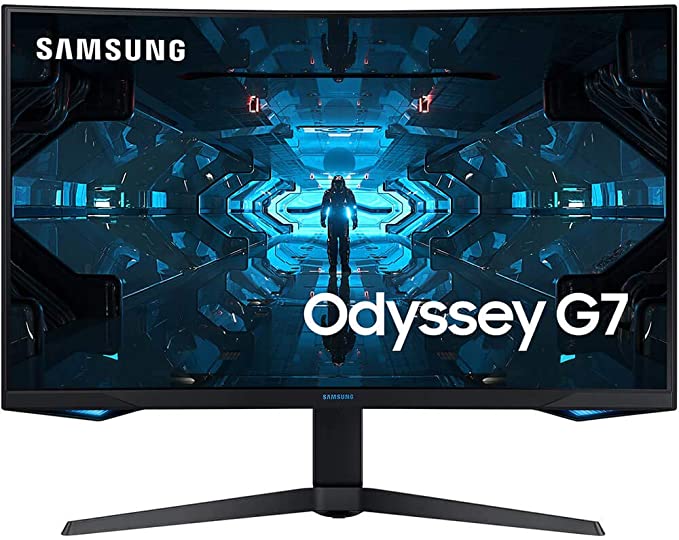Gaming monitors and regular monitors both have their advantages. If you’ve found yourself in the middle of making a choice between both to complete your gaming setup, then a good starting point is to understand where they differ.
Both types of monitors have their merits and downsides, so choosing between both can be hard. Thankfully, this article is here to shed more light on each and give you a clear guide on which one will suit you!
Gaming Monitor vs. Regular Monitor: What’s the Difference?
The difference between a gaming monitor and a regular monitor is the refresh rate. Regular monitors usually come with refresh rates of about 30-90Hz. However, gaming monitors regularly reach up to 144Hz and even 240Hz, giving you much smoother gameplay while gaming.
A good way to better understand which is better for you is to look at their similarities and differences.
Similarities
Purpose
Whether you go with a gaming monitor or a regular one, you’ll probably just fine. Half a decade ago, when the technology for both display types was still developing, there were significant differences between the two.
However, both regular and gaming monitors will now perform each other’s jobs just fine if given a chance. Getting one or the other usually comes down to need and preference, as each has special features that can affect your decision.
Usage
Both regular and gaming monitors can usually be interchanged. This means that you can generally use a gaming monitor for anything a regular monitor can do and vice versa. That said, there are some areas where one will outshine the other.
Resolution
Both monitors usually offer the same or comparable quality at similar price points. For example, a $300 monitor will usually have the same or similar resolution regardless of whether it’s a gaming monitor or a regular one. However, they might differ in refresh rate and size.
Differences
Refresh Rate
The most important thing for most people buying gaming monitors is their high refresh rates. Most gaming monitors usually ship with at least a 120Hz refresh rate.
A high refresh rate gives you smoother gameplay, makes the game feel more responsive, and reduces motion blur. High refresh rates can make a significant difference for game genres like FPS, racing, and fighting, where responsiveness is particularly important.
On the other hand, regular monitors do not typically have such a high refresh rate and usually cap between 30-90Hz. While having a high refresh rate might make a big difference for gaming, the effect is not as pronounced while watching TV or videos. Most manufacturers don’t focus on refresh rate when it comes to standard monitors.
The Samsung G7 27″ QHD gaming monitor has a 240Hz refresh rate, which is the top of the range for gaming monitors. Before deciding which framerate you want, check your graphics card and game specs to make sure your PC is even capable of gaming at such a high frame rate.
Input Delay
Input delay is the amount of time it takes for the action you take on your mouse, keyboard, or controller to be reflected on-screen. A low refresh rate increases this delay, so a higher refresh rate gaming monitor will give you a lower response time and reduced input delay.
G-Sync and Free-Sync
One feature found frequently in gaming monitors, but not standard monitors, is G-Sync/Free-Sync. These are gaming-specific technologies that allow your display to “talk” to your graphics card and sync the refresh rate of your monitor with the frame rate of your game.
It allows your monitor’s refresh rate to adjust dynamically, so that the monitor’s image refresh processes never become out of sync with the video frames coming off your graphics card.
This technology reduces screen-tearing and further cuts down input delay. G-Sync is the name of NVIDIA’s technology, while Free-Sync is the AMD version of the same tech. Depending on the type of graphics card you have, you’ll want to find a monitor with one of these technologies.
Price
The higher refresh rates and responsiveness usually come with an increased price. Due to this, a gaming monitor will usually cost more than a regular monitor with comparable specs. This rule isn’t completely rigid, and some regular monitors with extra features like curved screens or higher resolutions can sometimes be more expensive.
Size
Generally, gaming monitors are smaller than their non-gaming counterparts. There are a couple reasons for this.
While gaming, you have to take in a lot of information from the screen as fast as possible, and having to look at each corner of a larger screen while gaming is inefficient. Therefore, gamers typically opt for smaller monitors compared to the average shopper.
In addition, gamers usually sit very close to their monitor while gaming. While a regular display is nice for watching movies and television from a distance, the extra size is counterproductive for gamers who game while seated at a desk.
Can You Use a Gaming Monitor for Work?
You can use a gaming monitor for work the same way you would a regular monitor. However, gaming monitors can sometimes come with a few limitations that can make them unsuitable for some jobs. For example, they typically have less color accuracy than other monitors.
Gaming monitors will work just fine in most cases. Their main downside for work comes up when you need them for things where color accuracy is important. Things like video and photo editing, drawing, etc., are usually better done on specialized 4k, color-accurate monitors.
Can You Use a Gaming Monitor for School?
You can use a gaming monitor for school. Unless you’re taking a class on something graphically intensive like video rendering or photo editing, a gaming monitor will work just as well as a regular monitor.
Gaming monitors are versatile, so they are great for students. The only exception to this would be if you are using the monitor for graphic design or similar work. In that case, you want to opt for a monitor with high color accuracy so that your monitor accurately displays the colors of your editing software.
Are Gaming Monitors Worth It?
Gaming monitors are worth it if you’re a gamer. The high refresh rate, response times, and input lag can take your gaming experience to the next level. If you play competitively, they are especially good, since the few milliseconds you gain can sometimes make all the difference in a tight match.
That said, it’s important to understand that while gaming monitors are worth it, they are not compulsory to have a good time gaming. Most regular monitors will do the same job just fine, for a lower price.
If you have your mind set on a gaming monitor, however, it’s important to match your needs to the specifications of a good monitor. Here are three key areas you’ll want to take note of:
- Refresh rate (most important factor for reducing input lag)
- Screen quality
- Screen size
If you have any questions, or just want to hang with me, follow me on Twitch here. Also, for streaming tips and how to’s make sure to subscribe to my YouTube channel here.
Final Thoughts
Gaming monitors are one piece of gaming equipment that live up to the hype. The increased refresh rate and reduced input delay are usually enough to take your gaming experience to the next level, especially for action games and FPS titles.
However, while they bring quite a few advantages, you can get by just fine with a regular monitor if you can’t afford a gaming monitor. Regular monitors are usually cheaper, so if the cost of upgrading to a higher-quality gaming monitor is too much, don’t feel like you have to have one.
Sources
- Wikipedia: Motion blur
- CCL Monitors: What is monitor latency (Input lag) and why it matters in gaming?
- DisplayNinja: Is A 144Hz Monitor Worth It?
- Gfinity: Are Gaming Monitors Worth It? Here’s What We Think
Eric streams 3 days a week on Twitch and uploads weekly to Youtube under the moniker, StreamersPlaybook. He loves gaming, PCs, and anything else related to tech. He’s the founder of the website StreamersPlaybook and loves helping people answer their streaming, gaming, and PC questions.


